What is a Warehouse Management System (WMS)?
 If you are looking to implement Warehouse Management System into your business
If you are looking to implement Warehouse Management System into your business
and
are searching for some sound advice to walk you through the process
You are at the right place.
Today we are going to talk about Warehouse Management Softwares
What are they?
What does a Warehouse Management software do?
How is it different from your Inventory Management software/app.
What are the types of Warehouse Management Systems
Does it fit well into your business model?
What are “the must have features” you should not compromise when implementing inventory management.
And
What is the solution if you cannot find that one ultimate warehouse management system that works exactly as you would want?
Today we will cover all these and much more as we go through this article.
at the end of this article , not only will you befriend this topic but will also have a tried and tested way to choose the right warehouse management software for your self.
So without delaying any further, let’s begin
With technology advancing and taking new leaps almost every day, everything is becoming more dynamic and this includes your customer’s demands as well.
If you are a big firm operational at more than one premise, you customers might be present at one outlet, of yours, and need the item available in some other outlet
Or even if you are just a single delivery point business, there are tons of items you are dealing in, keeping track of each item with just excel sheets can keep you away from catching the pace.
So coming to your situations step by step
Lets understand what all can a warehouse management system do for you
Starting with
What is a Warehouse Management System?

A Warehouse Management System is simply a Software solution that helps you manage all the operational activities that are concerned with your warehouses, keeping all your data at one central database so it can be updated in real time with each activity whatsoever.
this means
It is not just your inventory management app… it is way beyond.
The Inventory management app maintains your inventory levels accurately but a Warehouse Management System increases the overall effectiveness of all your warehouse related activities.
It covers the in and out journey of your inventory right from the stage it gets in to your warehouses to the stage when it is finally delivered to your customer and guides your staff under an automated process what to pick, what to deliver and where is it.
About 46 percent of SMEs don’t bother to track inventory or are still using paper. And because of that, businesses in the US have $1.43 worth of product in their inventory for every $1 they make in sales. (Source: Stifel via SCDigest)
So basically you can keep the track the footsteps of all your inventory
hmm interesting,
But what does that really mean for you?
Bonus: Download the free checklist that will assist you in taking care of features to look for when you analyze a Warehouse Management Systems.
What does a Warehouse Management System do? and How is it different than your inventory management?

A complete warehouse management system as mentioned above does a lot more than just inventory Management or Stock Balancing (the more popular term)
These include a number of Processes which a warehouse management system can undertake for you on daily basis and it does all that in real time
- Receiving Incoming Shipments
- Providing Landed Costs
- Maintaining Multiple Warehouses and Transferring of Goods from one warehouse to the other
- Providing Real time Inventory Statuses
- Providing accurate Stock balancing for manufacturing Processes
- Indicating out Low Stocks
- Tracking down inventory with serial numbers (or barcodes or QRcodes)
- Managing Drop shipping and Cross Docking.
- Maintaining history of each item in a lot (if required)
- And also indicating expired stocks.
- Generating Predictive reports on inventory
- Keeping you away from Over-purchasing
And it does not stops here
Integrate it with
Sales and Purchase management Apps and the picture changes to a whole another level.
Imagine how easy it becomes when you can create your Delivery Orders from the customer Invoices itself and Delivery of these goods adjusts your inventory levels automatically
Same goes for purchasing, you receive the inventory with the Purchase Order itself which also keeps track of the orders yet to receive in your warehouse.
Integrate it with your manufacturing app and can do manufacturing related operations on automation as well.
Each business is unique and there are literally many advantages of deploying a good warehouse management system in each business and it is only the level to what you use it, that decides its benefits for your business.
So as of now we know what it does for you
let’s get on to a few advantages of a warehouse management system
Why use a warehouse management system?
Inventory and warehouse management is increasing in value and relevance. The number of warehouses in the U.S. has risen 6.8% over the last five years.(Source: Bureau of Labor Statistics)
If you have read till here, you must know yourself, why you need a Warehouse Management System
But let us list out a few points just to get the grip
- Automating various warehouse operations like picking, packing, delivering.
- Keeping Inventory Levels up to date in real time.
- Forecasting Inventory requirements.
- Reducing redundant operations
- Reducing Paperworks.
- Planning and Scheduling Warehouse Operations
- Reduces Human errors
- Optimizes space in your warehouse.
- Increases your overall Productivity.
The benefits are many, we can go on and on and can cover a complete article on this topic alone if my peers allow me to, Comment below if you think that is what you need us to cover as the next article.
The value of inventory tracking isn’t just in dollars and cents. Using barcodes on medication reduced errors in administration by 41.4% at an academic medical center. (Source: New England Journal of Medicine).
Let us now get some grip over what exactly a warehouse management system is for you.
What are the types of warehouse management system?
The main focus of buyers when looking for a software seems to be the
- Accessibility
- Integration with other applications
- And Ability to get customized
Based on these we have three demarcations for you
A. Local Standalone Warehouse Management
It is a single stand alone WMS which is hosted on your local Server and is most probably accessible within your local premises.
It often needs to be integrated with your rest of business management software and hardware devices to achieve workability.
It is a very limited edition of WMS functionalities and is a low cost solution probably the cheapest among the three.
These can be customized and integrated with third party applications but lacks the benefits that an all in one system can provide you with.
B. Cloud based Warehouse Management
It is a single stand alone WMS which is hosted on a cloud, as it is hosted on cloud, it accessibility increases and you and your staff can access this from almost anywhere around the globe with internet facility.
Since standalone it also needs to be integrated with your rest of business management software and hardware devices to achieve automation.
These often comes in a Monthly subscription package under the SAAS concept. (Software As A Service)
Integrations with third party applications are possible, but generally these are very limited to customization and does not fit into industries that require unique solutions.
C. (Part of a big system) Warehouse Management
Then comes the warehouse management system that is a part of a big application (an ERP) already.
These can be a Cloud based application or can be a Local hosted and hence can have same advantages and disadvantages as above.
The integration with all operations comes handy and seamless.
They are already connected to most of the applications you might need already and a very little customization may often fulfill your wish for a the desired product in your hand.
Often solves your Accounting Integration, Sale or Purchase’s Integration with Inventory Management very comfortably without any data duplication or human errors whatsoever.
A very good example of a complete all in one business management system is Odoo. It is cloud based, easy to customize and integrates with most third party applications and hardware devices if required.
Do you even need a Warehouse Management System for your business?
To answer this question, you need to analyze first where does a warehouse management system fits into your business.
Earlier only big firms used to invest in a good system but nowadays with technological advancements and a very good ROI even SMBs have started recognizing the benefits of its implementation.
so
If you are a Trader
Right from you creating a Purchase Order for your supplier to making a Delivery Order and having successfully delivered the goods to your customers,
all your operations
for eg, Picking, Storing, Bar-coding, transfer from one warehouse to another, Packaging and Delivering Goods, even Managing return of Goods becomes very handy with a flexible and robust warehouse management system in your organization.
If you are a Manufacturer
Include Pushing and Pulling Inventory for manufacturing, Storing Raw Materials and even Storing Under processed finalized material.
Even if you just DropShip
a good warehouse management system assists you in Scheduling Deliveries, Holding Delivery Details, Claiming in case of miscommunications and providing business reports to analyze.
A good Warehouse Management system not only does what is mentioned above
Secretly, without you having to noticed
It protects you from Employee Thefts (and it is a serious case of Problem in most of businesses related to logistics).
and ..
Lets you plan ahead for purchases in case of Price Dips.
The number of companies without a robust inventory management system in place is shocking. 46% of SMBs either don’t track inventory or use a manual method. (Source: Wasp Barcode).
for those who have not used one, must have decided by now, that they need warehouse management system. So as you have decided
Let’s get on to the next big Question
What are “the must have features” you should not compromise, when implementing Warehouse management system.
To be honest
Each and every warehouse management system will provide the basic features
For eg:
- Stock Maintenance
- Pickup and Delivery Notes ect
and we know functionality wise they almost look the same
but ofcourse we have something for you, to be able to deal with this problem today, we even have a checklist that you can follow in the later section of this article.
Look carefully into the following for better decision making and better ROI in long term.
a. The System should be flexible
Look Carefully if the system is flexible in terms of customization or not. You don’t want to invest in something that cannot grow with your business.
Change management itself takes investment, and takes time.
You also do not want to train your staff for one software this year and another the next year and so on. Not suggestible.
My suggestion: Avoid any system that cannot be customized.
b. Check if the system is Cloud based or not.
It is highly advisable to have a cloud based system.
Investing in a system that is not available to you when you are abroad, or in the adjacent city, takes away the power to control your business from you.
Also
Your sales person who reaches your client won’t have a real time situation of your stock. Not suggestible.
Running it in your other warehouse might require another set of license if it is not cloud based.
Some may debate over this but it is a big turn down for long term investment in a good system.
c. Should have Drill down hunting facility and Advanced Search facility
d. Check the Licensing
Look if the system is SAAS based or Annual Licensing based or if it is an Open Source solution.
e. Mobile responsiveness
This one is surely not a must have feature but it becomes very comfortable for your sales staff if they sell going to your customer’s locations.
Almost everyone understands the value of working with mobile devices to increase speed and operational efficiency. 67% of warehouses plan to use mobile devices to manage inventory. (Source: Motorola)
f. The Cost of Overall ownership
The system needs to fit your pockets comfortably and even getting it customized in future should not be very expensive.
g. Third Party Applications and Hardware Integrations
No matter how good the software you are looking for, there will always be some feature or complete set of functionality that your system cannot fulfill and some other software might be doing it pretty comfortably.
There shall always be a scope of Third Party Applications and Hardware Integrations in your softwares
We don’t know what good and must have third party application comes up and that becomes a Game changer as well in future.
So future proofing yourself always look for systems that allow Third Party Applications and Hardware Integrations.
h. Implementation and Training
See if there is a pre generated Training Material or if your solution provider is providing all kinds of implementation supports or not.
i. Auto Backups
The system needs to automatically backup itself and remove the old copies as well otherwise your servers will be loaded up.
Last but not the least
j. Does the Software naturally fits into your business model?
It is very important that the Software that you are going to invest in should be around 70-80% exactly what you are looking for.
So when you understand exactly how the system works (yes it will take some time for you), you are able to get it customized to fit into your work culture.
You don’t need to reinvent the wheel.
Specially now, when you have all kinds of Open source software lined up ready to be customized (very quickly) as per your requirements.
Bonus: Download the free checklist that will assist you in taking care of features to look for when you analyze a Warehouse Management Systems.
How to choose the Right Warehouse Management system?
Keeping this one short and sweet
1. Evaluate your current Situation.
In the article 12 steps to a successful ERP implementation complete article here
We mentioned the first step you should take is to evaluate your own requirements
Ask yourself (or to your team)
- How fast do you need your warehouse data to be available across the enterprise?
- Do you want automation in your business?
- What do you need to accurately execute and ship your orders?
- Are inaccuracies impacting your business negatively?
- What information do you need to make your warehouse strategy?
List out features and functionality you are looking in a warehouse management system. For your assistance

Share this Infographic On Your Site
We prepared an exhaustive list of features a warehouse management system can possibly have. Download this to save yourself some time to brainstorm. You will also get a step by step checklist to Choose the Right Warehouse System
And
2. Make a list of your main Pain Points (we need to check later on if your selected system fulfills these or not).
Download the checklist above and further Brainstorm and add to this list of features you want in your system, the ones you cannot live without.
Also try to think of features you might need in future
And by keep in mind that you might need to get your system customized in future as you grow.
3. Work on your Budget limitation
Decide the overall budget for Cost of ownership as well as give a thought well in advance for the maintenance and support related costs and you budgets in this area.
4. Decide On Licensing
Some argue that with open source systems you compromise with your security (not actually) but myths are myths, one need to bust them.
So decide with what you want to go with.
5. Now you Start looking for systems
Start looking for systems that provides you resolution for all the pain points you mentioned above.
In case it does not work it out
Here is what you can do
Start looking for systems that provides you at least 70-80% of resolution of the pain points you mentioned above but they must be customizable. (It will be better if it is an Open source system at this point, so it won’t cost you much)
you should take care that the customization required are the minimum there can be
But do not compromise if the system cannot be customized later.
When you get either of the above two types of systems
Shortlist them to further analyze
And always
6. Request for a demo from the providers
7. Check their previous works, if possible see if they got any references that you can counter check
Finally
8. Download the checklist I gave above and check if all criteria’s are met.
Bonus: Download the free checklist that will assist you in taking care of features to look for when you analyze a Warehouse Management Systems.
If you see all the pieces fitting well in the jigsaw.
Congratulate yourself
You have certainly chosen the Right Warehouse Management System
but
What to do, if you still could not find that one ultimate warehouse management system that works exactly as you want?
If you cannot find the exact warehouse management system that works exactly as per your workflow.
Go for an Opensource Business management system
And get it customized as per your requirement.
Odoo for instance, check out its features here, It covers all the points in the above checklist, easy to customize and saves you tons of time and money.
Here’s what to do next
Download the checklist we have given here.
Follow the steps to find the right Warehouse Management System we have discussed here.
Use the detailed checklist to see if this software covers what you actually need.
and in case you still find it hard, contact us. We will implement the Warehouse Management System customized with all the features you will need.
Do let us know in the comment section if we can improve this Post with any more information.
Do let us know if you want us to cover some topic for you.
and as always
Thanks for Reading.
Download the step by step ERP Implementation Checklist.
Congratulations ! Your Checklist will be in your mail soon. In case you din't get it do not forget to check your spam folder.

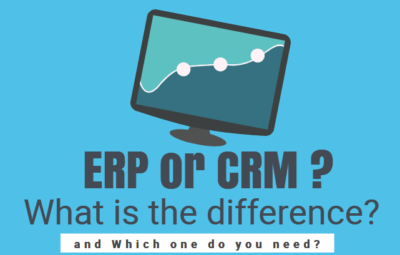
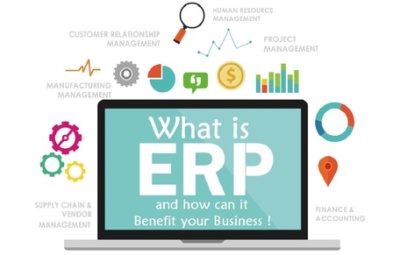
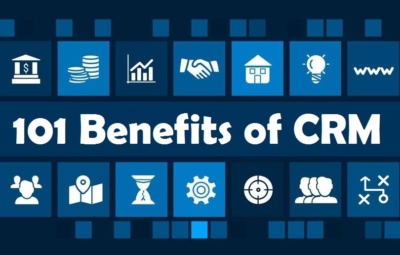
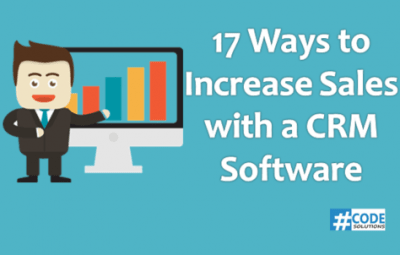
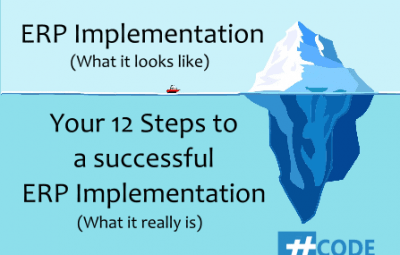
Pingback: spironolactone yellow pill
Pingback: rx sitagliptin phosphate tablets ip
Pingback: stromectol tablet 3 mg
Pingback: tamsulosin patient teaching
Pingback: synthroid tmax
Pingback: voltaren interaction with enlarged prostate
Pingback: venlafaxine migraine
Pingback: tizanidine 4mg cost
Pingback: robaxin for horses
Pingback: actos emea
Pingback: does protonix cause weight gain
Pingback: acarbose wirkmechanismus
Pingback: compounded semaglutide near me
Pingback: abilify interactions
Pingback: repaglinide nice guidelines
Pingback: remeron drug
Pingback: what is celecoxib capsules 200mg used for
Pingback: ashwagandha sex drive
Pingback: celexa pill
Pingback: bupropion generic name
Pingback: aripiprazole uses
Pingback: allopurinol action
Pingback: aspirin for headaches
Pingback: how long does amitriptyline make you sleepy
Pingback: what is depakote
Pingback: citalopram side effects
Pingback: diclofenac brand name
Pingback: contrave kit
Pingback: cartia diltiazem
Pingback: augmentin antibiotic
Pingback: ddavp for intracranial bleed
Pingback: flomax farmaco bustine
Pingback: cozaar vs losartan
Pingback: ezetimibe fasa
Pingback: flexeril maximum dose
Pingback: effexor medication
Pingback: will amoxicillin treat a sinus infection
Pingback: bactrim drug classification
Pingback: bactrim oral dose for uti
Pingback: side effects of cephalexin in dogs
Pingback: ciprofloxacin brand
Pingback: can you take duloxetine and sertraline together
Pingback: order viagra online with paypal
Pingback: gabapentin pharmacopoeia
Pingback: cephalexin side effects pregnancy
Pingback: flagyl malaise
Pingback: can you take fluoxetine on an empty stomach
Pingback: what are the side effects of zoloft
Pingback: what is the difference between escitalopram and citalopram
Pingback: quanto custa o rybelsus
Pingback: is ozempic semaglutide
Pingback: victoza vs semaglutide
Pingback: ramipril metformin
Pingback: lasix nausea
Pingback: lisinopril components
Pingback: valacyclovir bioavailability
Pingback: lyrica and klonopin
Pingback: methotrexate tamoxifen
Pingback: psoriasis metronidazole
Pingback: insufflated gabapentin
Pingback: bactrim ritirato
Pingback: cialis overnight online
Pingback: buy cialis generic
Pingback: cheap cialis 20mg
Pingback: elevex tadalafil 20mg
Pingback: generic viagra lowest price
Pingback: generic viagra in the usa
Pingback: purchase viagra canada
Pingback: viagra without prescription canada
Pingback: best place buy viagra online
Pingback: woman viagra
Pingback: can you buy viagra at pharmacy
Pingback: snafi tadalafil 20mg
Pingback: cialis generic best price that accepts mastercard
Pingback: viagra soft
Pingback: women viagra buy
Pingback: how long does it take for cialis to take effect
Pingback: Sporanox
Pingback: first medicine online pharmacy store
Pingback: cialis 20 mg how long does it take to work
Pingback: buy cialis pay pal
Pingback: nebenwirkungen tadalafil